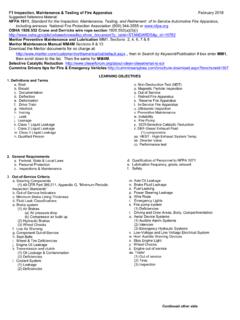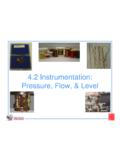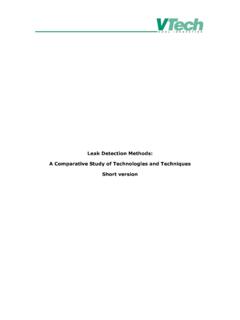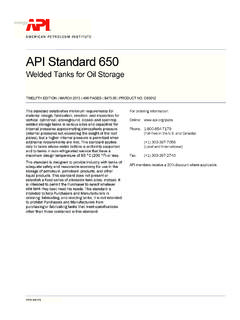Transcription of Clinical White Paper - Aerogen
1 Clinical White Paper Table of Contents 1 Abstract 1. 2 High Efficiency Aerosol Drug Delivery During 2. Ventilation 3 A Lung Recruitment Strategy for Patients with 5. Respiratory Failure utilizing Aerogen 4 Comparison of Aerogen with MDIs 5. 5 Superior Drug Deposition During HFOV 6. 6 Optimal Drug Delivery During NIV & HFNC 7. 7 Aerogen Aerosol Drug Delivery Technology 12. for Non-Vented Patients 8 Aerogen Improves Clinical Outcomes in the 16. Emergency Department 9 Aerogen in the OR 18. 10 Summary 18. 11 References 19. 1 Abstract Aerogen 's vibrating mesh technology, available within the Aerogen Solo, Aerogen Pro and NIVO has been.
2 Adopted for use across many areas of the hospital can be used with spontaneously breathing patients with mouthpieces and masks throughout the acute care setting where Aerogen Ultra enables effective during a variety of ventilatory support including aerosol therapy of up to 35% inhaled dose available conventional mechanical ventilation, high frequency to the patient19. Recent Clinical data have shown oscillatory ventilation, non-invasive ventilation and significant improvements in Clinical outcomes and high flow nasal cannula. Clinical researchers have reduced drug dose in the ED for all patients requiring established its superior performance in bench and Albuterol via the Aerogen Ultra 37.
3 Imaging studies1-13. Aerogen devices can provide the patient with up to 9 fold higher drug dose than a standard small volume nebulizer (SVN) during mechanical ventilation2. In pediatric patients in respiratory failure Aerogen aerosolized Albuterol resulted in improved lung recruitment14. It is also cost effective, as shown by multiple hospitals in the US switching to Aerogen and observing significant savings compared to MDIs15- 18.. The Aerogen technology is not only available for use during both invasive and non-invasive ventilation but Key Take Away Points Aerogen 's vibrating mesh technology has been Substantial cost savings have been observed in adopted across the hospital and used during comparison to MDIs in the US.
4 MV, HFOV, NIV, HFNC and with spontaneous breathing patients. Improved lung recruitment compared to baseline can be achieved with Aerogen aerosolized Aerogen technology enables optimal aerosol Albuterol in pediatric respiratory failure patients. therapy across all ventilatory support. Improved Clinical outcomes observed with use of Bench, imaging and case studies all provide the Aerogen Ultra in the ED. evidence of the superior performance of the Aerogen aerosol drug delivery devices. Clinical White Paper 1. 2 High Efficiency Aerosol Drug Delivery During Ventilation Aerogen devices are highly efficient vibrating mesh This difference in aerosol deposition related to aerosol drug delivery systems which can be used positioning was originally studied by Ari et al.
5 And inline during any type of respiratory support including demonstrated improved deposition when the Aerogen mechanical ventilation, high frequency oscillatory Solo was placed before the humidifier compared ventilation (HFOV), non-invasive ventilation (NIV), to at the wye with both adult and pediatric settings continuous positive airway pressure (CPAP) and High when utilizing a bias flow1; without bias flow improved Flow Nasal Cannula (HFNC)1-4, 7, 20, 23. The Aerogen Solo aerosol deposition was noted when the nebulizer was utilizes active vibrating mesh technology, where energy positioned closer to the patient22.
6 Applied to the vibrational element, causes vibration of each of the 1000 funnel shaped apertures within the mesh. The mesh acts as a micropump drawing liquid through the holes producing a low velocity aerosol optimized for targeted drug delivery to the lungs. The Aerogen device can deliver 9 times more aerosol dose compared to standard small volume nebulizer during mechanical ventilation2, and outperforms all standard small volume nebulizers when positioned at both the wye (proximal to the patients in the inspiratory limb) and before the humidifier2 (Figure 1).
7 While the Ultrasonic nebulizer efficiency is comparable to the Aerogen Solo at the Y, there are many limitations with the device which include an inability to aerosolize viscous solutions, heat generation which can degrade some solutions and large residual volumes21. Furthermore the use of ultrasonic nebulizers is now minimal in the hospitals. 2. Aerogen 40. SVN (Hudson). 35. SVN (Salter). USN. 30. Drug Dose, %. 25. 20. *. 15. 10. *. * * *. 5. 0. Prior to the Humidifier At the Wye Figure 1. omparison of drug deposition after aerosol therapy through a ventilation circuit with standard small volume C.
8 Nebulizers, ultrasonic and the Aerogen Solo. The position of the nebulizer tested included: at the wye and before the humidifier (closer to the ventilator). In this pediatric model of mechanical ventilation with bias flow the Aerogen Solo outperforms both small volume nebulizers in both positions in the ventilator circuit. *p< Adapted from 2. Clinical White Paper 3. Physiological lung dose was studied in an infant animal The superior drug deposition available with Aerogen model, where quantification of radiolabeled aerosol is associated with the minimal residual volume left in was measured after inhalation through a ventilator the device after nebulization.
9 Standard small volume circuit, tested with both a small volume nebulizer and nebulizers on average leave up to half of the drug the Aerogen Pro. The Aerogen Pro demonstrated a 25 behind which can be quite costly when using more fold higher deposition of aerosol in the lungs compared expensive drugs24. Dubus et al. observed that the to a standard small volume nebulizer13. The Aerogen standard small volume nebulizer has a residual volume Pro achieved a lung dose of 13% and the difference of mL after nebulization of 3-mL of solution. In in aerosol deposition between the two systems can contrast the Aerogen Pro had a residual volume of be clearly observed in the scintigraphy pictures below mL after (Figure 2)13.
10 Small Volume Nebulizer Aerogen Pro Figure 2. ung Scintigraphy images of a ventilated infant animal model after inhalation of radiolabeled aerosol using L. either a small volume nebulizer or the Aerogen Pro . The Aerogen Pro delivered a significantly greater lung dose than the small volume nebulizer. Adapted from 13. 4. 3 Lung Recruitment Strategy for Patients with Respiratory Failure utilizing Aerogen Strategies to improve lung recruitment in patients improved the functional residual capacity of critically with acute respiratory distress syndrome (ARDS) and ill children with respiratory failure.





